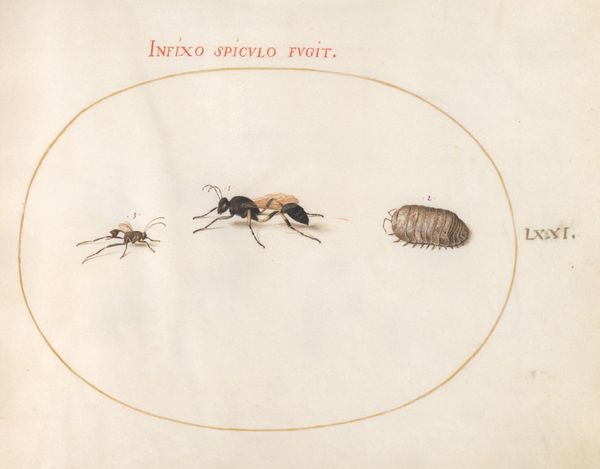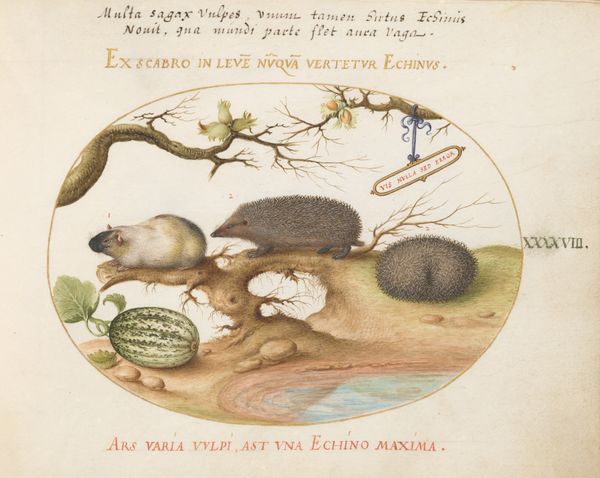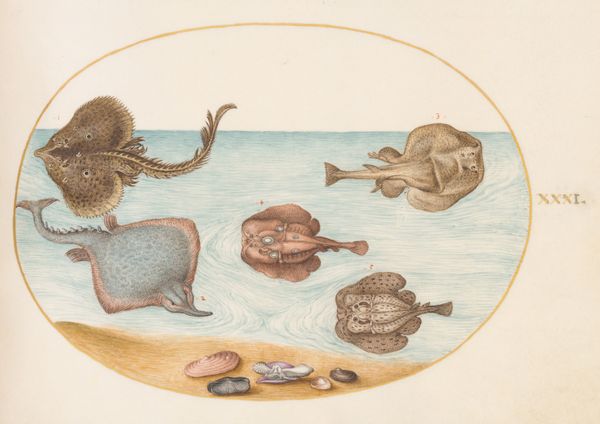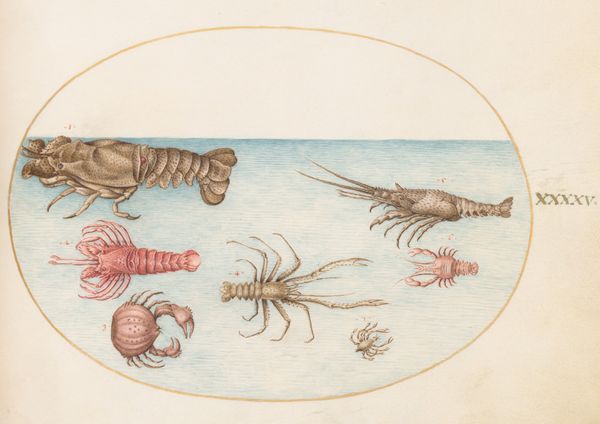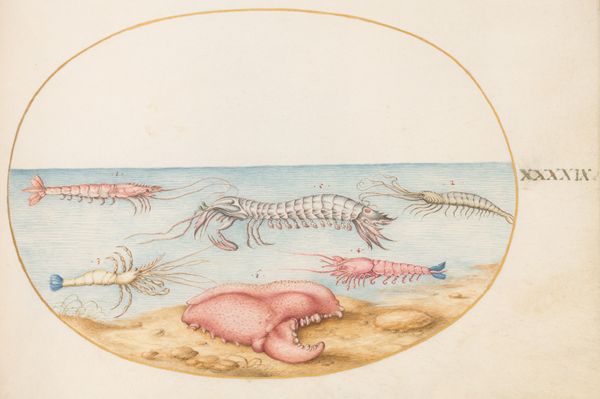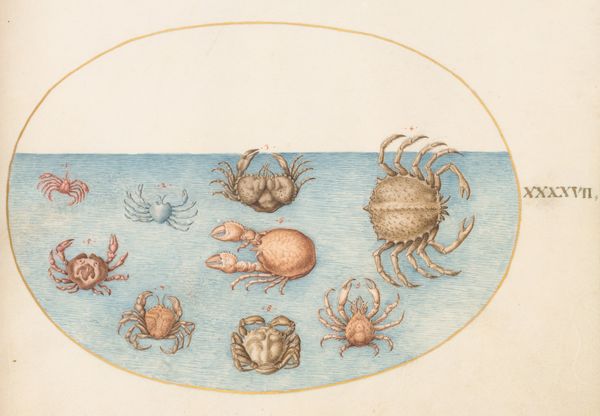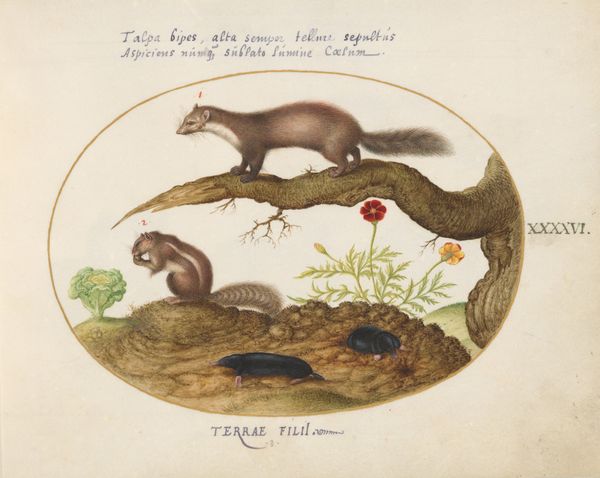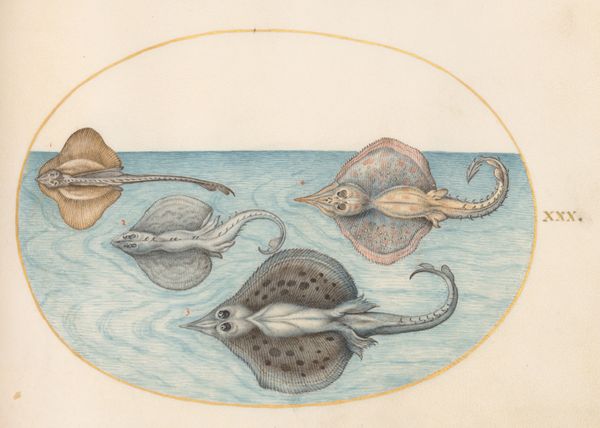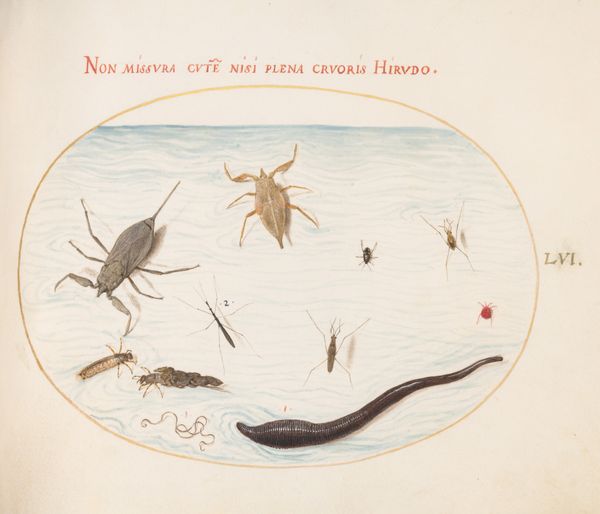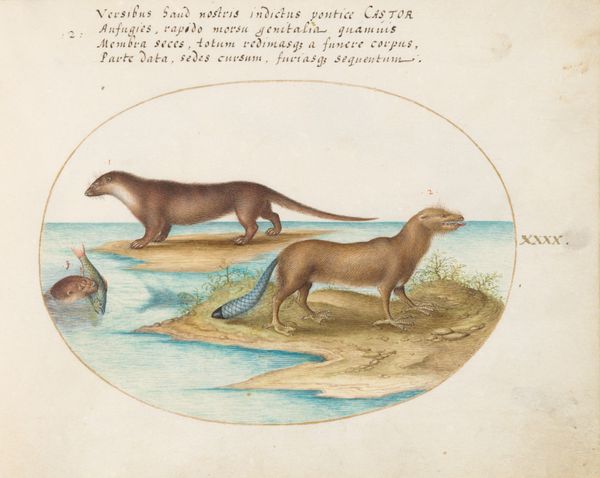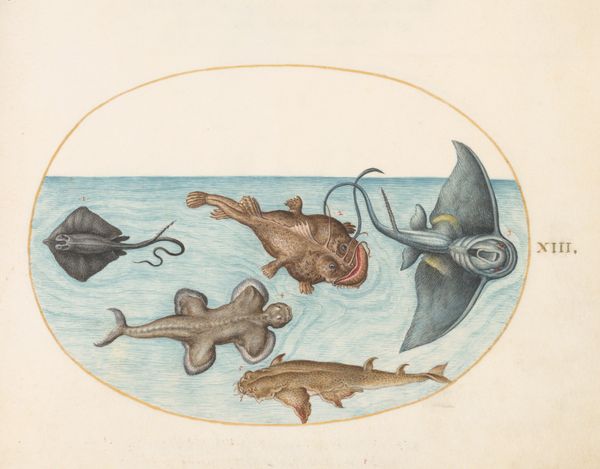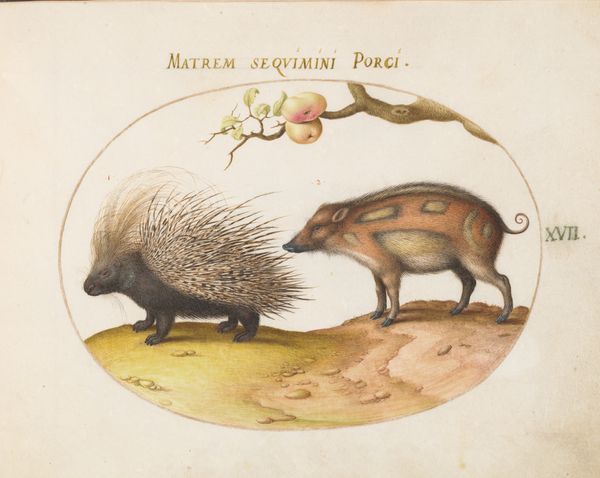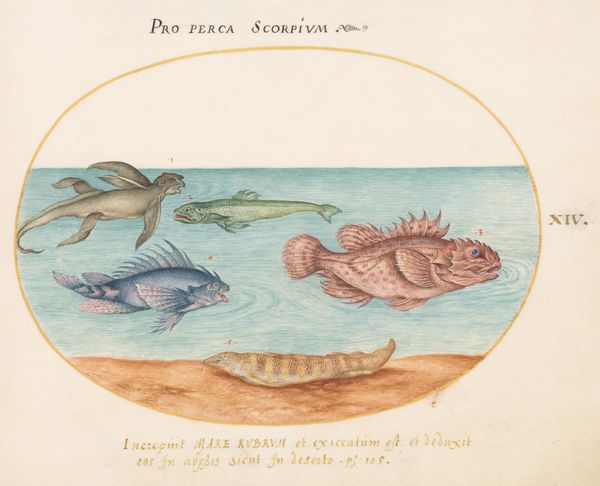
Plate 3: A Walrus, a Nine-Legged Octopus, and Ocean Sunfish c. 1575 - 1580
0:00
0:00
drawing, coloured-pencil, watercolor
#
drawing
#
coloured-pencil
#
water colours
#
11_renaissance
#
watercolor
#
coloured pencil
#
watercolour illustration
#
botanical art
#
watercolor
Dimensions: page size (approximate): 14.3 x 18.4 cm (5 5/8 x 7 1/4 in.)
Copyright: National Gallery of Art: CC0 1.0
Curator: This image is "Plate 3: A Walrus, a Nine-Legged Octopus, and Ocean Sunfish," a work by Joris Hoefnagel, created circa 1575-1580, employing coloured pencil and watercolour. It feels very…scientific somehow, yet oddly dreamlike. Editor: Yes, the composition has a kind of flat, emblematic quality. Look at the arrangement of the walrus and the assorted sea creatures; they're almost like specimens pinned to a board. What strikes me first is how stylized and almost naive it appears, particularly the coloring. Curator: I see it differently. Considering the era, the focus on detail and observed, even if slightly fantastical, morphology suggests an emerging naturalism. Note the care given to rendering the walrus's skin texture, compared with, say, the generalized treatment of the water. This likely reflects Hoefnagel’s access to, or at least second-hand accounts of, northern European ports and the products of trade and hunting. Editor: But those fantastic creatures, the nine-legged octopus in particular—surely you acknowledge a break from pure naturalism? To me, it suggests more an interest in classification and ordering the natural world within a philosophical framework. The image is bounded by a neat oval frame. Curator: Certainly, it is an attempt to categorize, as scientific illustration often functioned within colonial projects, but it also reflects the limits of empirical knowledge at the time, mixing observed reality with received folklore. Editor: Let’s consider the material constraints. Using coloured pencil and watercolor implies a degree of precision, but also perhaps a dependence on available pigments, and potentially points to print production. I wonder about the cost of the materials; who would be its likely audience? Curator: Given the probable expense of coloured pigments and the skill evident in rendering, I would imagine this work was intended for a wealthy patron—a merchant with an interest in expanding trade routes or a member of the aristocracy fascinated by exotic fauna. Perhaps the artwork itself served to solidify such standings within society. Editor: Right. And that reinforces its function, not simply as an attempt at faithful depiction but also as a marker of status and engagement within a growing early-modern capitalist network of trade and exploration. Curator: Yes, it certainly complicates a purely formal reading to recognize that element in this work's construction. Editor: Well, seeing the interaction between visual arrangement and those contextual factors truly enriches my understanding.
Comments
No comments
Be the first to comment and join the conversation on the ultimate creative platform.
